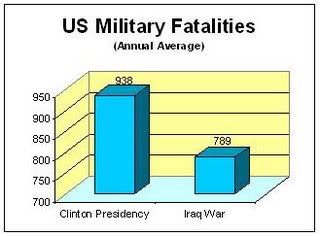 Where a distribution is highly right skewed, means and medians are far from the same. In the example I show on the right, the percentiles are as follows:
Where a distribution is highly right skewed, means and medians are far from the same. In the example I show on the right, the percentiles are as follows:| 1% | 19.0 |
| 2% | 13.2 |
| 5% | 7.0 |
| 10% | 4.0 |
| 20% | 2.2 |
| 50% | 1.0 |
| - | |
| mean= | 2.2 |
That is, the first percentile is nineteen times the median, the fifth percentile is seven times the median, and so on. This is just a made-up example (a power law, if you want to know) that I arranged so that the mean is conveniently the same as the twentieth percentile, i.e. only the upper twenty percent are making the "average" or more. But it's a feature of all right skewed distributions that the "average amount" isn't what the "average person" gets.
The "GDP per capita" is much more sensitive to changes in the income of the small population at the right of the distribution than the median is. It's possible for average people to be better or worse off if the GDP goes up, or better or worse off if it goes down.
That's why I'm never interested in hearing whether something is "helping" or "hurting" the country's Gross Domestic Product. The income of average people depends much more on the shape of the distribution than its total size.

